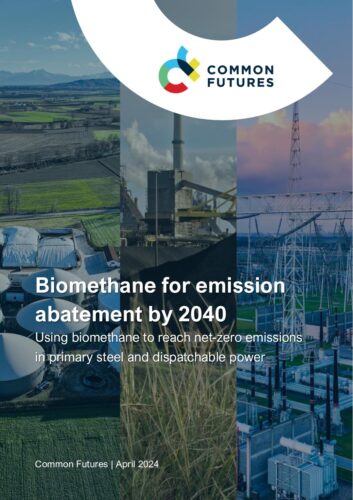Biomethane for emission abatement by 2040

Using biomethane to reach net-zero emissions in primary steel and dispatchable power
Biomethane as a renewable energy source can be used to reduce greenhouse gas emissions in various end use sectors. This study aims to provide insights on the abatement costs and potential of biomethane compared to other forms of renewable and low-carbon energy. It shows that biomethane can play a relevant role as a cost-effective abatement option irrespective of its sustainable production potential.
This report focuses on the abatement costs of biomethane to produce dispatchable electricity and to provide high temperature heat and carbon-rich feedstock to produce steel, as two relevant examples. Biomethane could perform well in ‘sweet spots’ in other end use sectors too. Modelling is required to obtain a more definite view on the merits of biomethane in all end use sectors.
Biomethane is produced with net-zero lifecycle emissions, if manure is used in the average feedstock mix, and no main crops. Using manure avoids methane emissions which offset the (limited) supply chain emissions from other feedstocks. The greenhouse gas emission performance of biomethane can be enhanced by applying negative emission measures. Biomethane can provide negative emissions in three ways: (1) carbon storage in the soil when growing biomass, (2) precombustion carbon capture in the production of biomethane and (3) post-combustion carbon capture when using it.
Production costs of biomethane could be €70 per MWh on average, noting that production in large installations is significantly cheaper than in smaller ones. This cost level equals a renewable hydrogen cost of just over €2 per kilogramme.
The marginal abatement cost curves presented as example case studies in this report show that biomethane is a cost-efficient abatement option in the production of dispatchable electricity and in primary steel production. The abatement potential of biomethane in both assessed sectors is capped by the supply potential that can be made available for consumption in these sectors.
In the electricity system, electricity from biomethane is the most cost-effective option to balance the electricity system in particular during ‘windless winter weeks’, making use of inexpensive storage in existing gas storages. In primary steel production, biomethane can be used in the DRI process, thereby replacing existing steel production that uses cokes coal. Most steel abatement options end up with remaining emissions. Biomethane combined with CCS is not only the most cost-effective option to achieve net zero emissions steel production, but beyond that it achieves climate positive steel.

